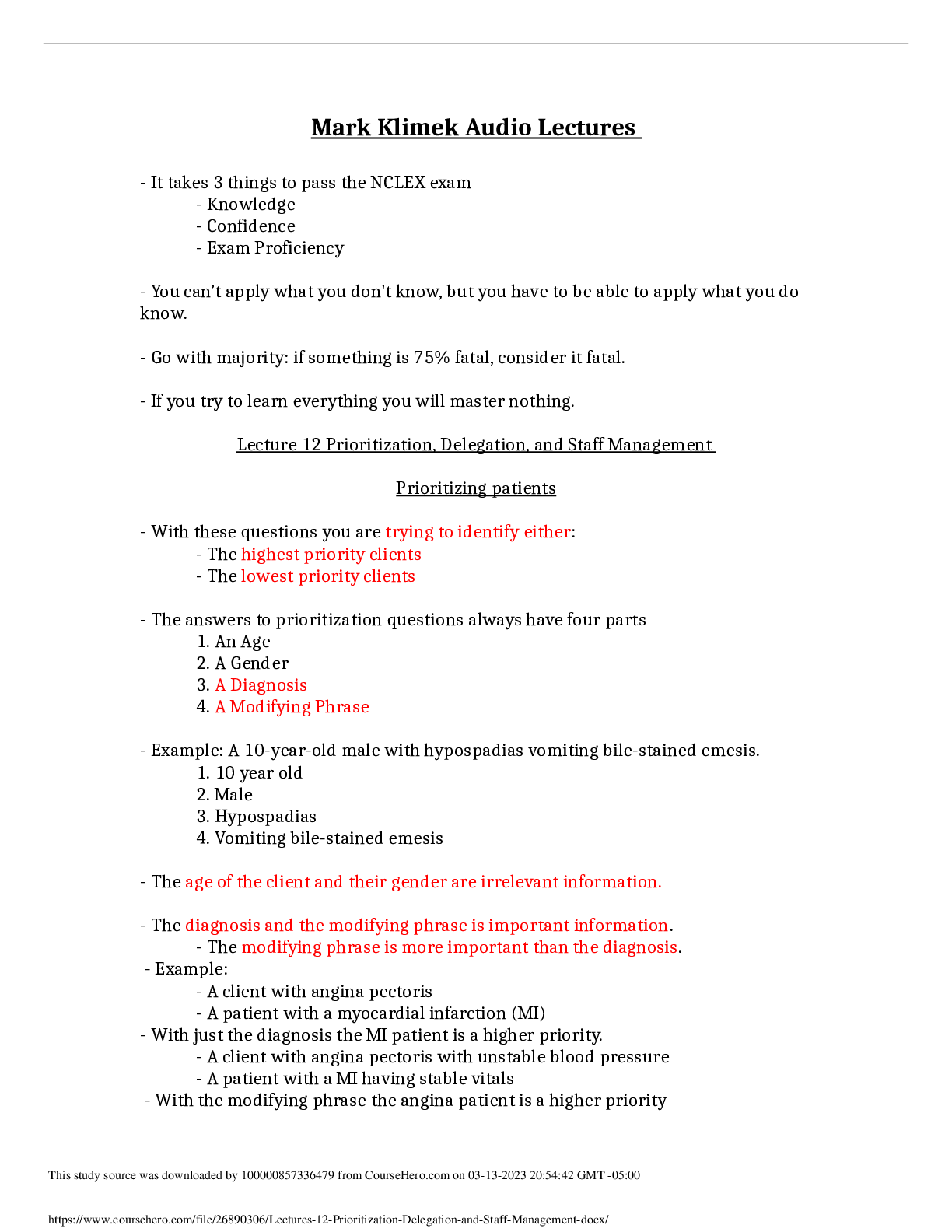NCLEX-LPN 3000 Exam Questions & Answer, All Explained with Rationales
Document Content and Description Below
NCLEX-LPN 3000 Exam Questions & Answer, All Explained with Rationales-The parent of a preschooler with chickenpox asks the nurse about measures to make the child comfortable. The nurse instructs the p ... arent to avoid administering aspirin or any other product that contains salicylates. When given to children with chickenpox, aspirin has been linked to which disorder? 1. Guillain-Barré syndrome 2. Rheumatic fever 3. Reye's syndrome 4. Scarlet fever - Correct Answer: 3 RATIONALES: Research shows a correlation between the use of aspirin during chickenpox and the development of Reye's syndrome (a disorder characterized by brain and liver toxicity). Therefore, the nurse should instruct the parents to avoid administering aspirin or other products that contain salicylates and to consult the physician or pharmacist before administering any medication to a child with chickenpox. No research has found a link between aspirin use, chickenpox, and the development of Guillain-Barré syndrome, rheumatic fever, or scarlet fever. A client is to have an epidural block to relieve labor pain. The nurse anticipates that the anesthesiologist will inject the anesthetic agent into the: 1. subarachnoid space. 2. area between the subarachnoid space and the dura mater. 3. area between the dura mater and the ligamentum flavum. 4. ligamentum flavum. - Correct Answer: 3 RATIONALES: For an epidural block, the nurse should anticipate that the anesthesiologist will inject a local anesthetic agent into the epidural space, located between the dura mater and the ligamentum flavum in the lumbar region of the spinal column. When administering a spinal block, the anesthesiologist injects the anesthetic agent into the subarachnoid space. The ligamentum flavum and the area between the subarachnoid space and the dura mater are inappropriate injection sites. The physician prescribes penicillin potassium oral suspension 56 mg/kg/day in four divided doses for a client with anorexia nervosa who weighs 25 kg. The medication dispensed by the pharmacy contains a dosage strength of 125 mg/5 ml. How many milliliters of solution should the nurse administer with each dose? - Correct Answer: 14 RATIONALES: To determine the total daily dosage, set up the following proportion: 25 kg/X = 1 kg/56 mg X = 1,400 mg. Next, divide the daily dosage by four doses to determine the dose to administer every 6 hours: X = 1,400 mg/4 doses X = 350 mg/dose. The adolescent should receive 350 mg every 6 hours. Lastly, calculate the volume to give for each dose by setting up this proportion: X/350 mg = 5 ml/125 mg X = 14 ml. The nurse must irrigate a gaping abdominal incision with sterile normal saline, using a piston syringe. How should the nurse proceed? 1. Irrigate continuously until the solution becomes clear or all of the solution has been used. 2. Moisten the area around the wound with normal saline after the irrigation. 3. Apply a wet-to-dry dressing to the wound after the irrigation. 4. Rapidly instill a stream of irrigating solution into the wound. - Correct Answer: 1 RATIONALES: To wash away tissue debris and drainage effectively, the nurse should irrigate the wound until the solution becomes clear or all of the solution has been used. After the irrigation, the nurse should dry the area around the wound; moistening it promotes microorganism growth and skin irritation. When the area is dry, the nurse should apply a sterile dressing, rather than awet-to-dry dressing. The nurse always should instill the irrigating solution gently; rapid or forceful instillation can damage tissues. As an adolescent is receiving care, he's inadvertently injured with a warm compress. The nurse completes an incident report based on the knowledge that identification of which of the following is a goal of the report? 1. To reprimand the involved staff members for their actions 2. To identify the learning needs of staff to prevent incident recurrences 3. To reprimand the nurse-manager responsible for the unit 4. To hold people accountable for their actions - Correct Answer: 2 RATIONALES: The purpose of an incident report is threefold: to identify ways to prevent incident recurrences, to identify patterns of care problems, and to identify facts surrounding each incident. Incident reports aren't used to hold people accountable for their actions, to punish those involved in the incident, or to punish the nurse-manager responsible for the unit. As a client progresses through pregnancy, she develops constipation. What is the primary cause of this problem during pregnancy? 1. Decreased appetite 2. Inadequate fluid intake 3. Prolonged gastric emptying 4. Reduced intestinal motility - Correct Answer: 4 RATIONALES: During pregnancy, hormonal changes and mechanical pressure reduce motility in the small intestine, enhancing water absorption and promoting constipation. Although decreased appetite, inadequate fluid intake, and prolonged gastric emptying may contribute to constipation, they aren't the primary cause. An adolescent with type 1 diabetes mellitus is experiencing a growth spurt. Which treatment approach would be most effective for this client? 1. Administering insulin once per day 2. Administering multiple doses of insulin 3. Limiting dietary fat intake 4. Substituting an oral antidiabetic agent for insulin - Correct Answer: 2 RATIONALES: During an adolescent growth spurt, a regimen of multiple insulin doses achieves better control of the blood glucose level because it more closely simulates endogenous insulin release. A single daily dose of insulin wouldn't control this client's blood glucose level as effectively. Limiting dietary fat intake wouldn't help the body use glucose at the cellular level. An adolescent with type 1 diabetes mellitus doesn't produce insulin and therefore can't receive an oral antidiabetic agent instead of insulin. A client is admitted to the health care facility with bowel obstruction secondary to colon cancer. The nurse obtains a health history, measures vital signs, and auscultates for bowel sounds. Which step of the nursing process is the nurse performing? 1. Planning 2. Data collection 3. Evaluation 4. Implementation - Correct Answer: 2 RATIONALES: During the data collection step of the nursing process, the nurse obtains the client's health history, measures vital signs, and performs a physical examination to gather data for use in formulating the nursing diagnoses. During the planning step, the nurse designs methods to help resolve client problems and meet client needs. During evaluation, the nurse determines the effectiveness of nursing interventions in achieving client goals. During implementation, the nurse takes actions to meet the client's needs. [Show More]
Last updated: 1 year ago
Preview 5 out of 53 pages

Loading document previews ...
Buy this document to get the full access instantly
Instant Download Access after purchase
Buy NowInstant download
We Accept:

Reviews( 0 )
$14.50
Can't find what you want? Try our AI powered Search
Document information
Connected school, study & course
About the document
Uploaded On
Dec 11, 2024
Number of pages
53
Written in
All
Additional information
This document has been written for:
Uploaded
Dec 11, 2024
Downloads
0
Views
80

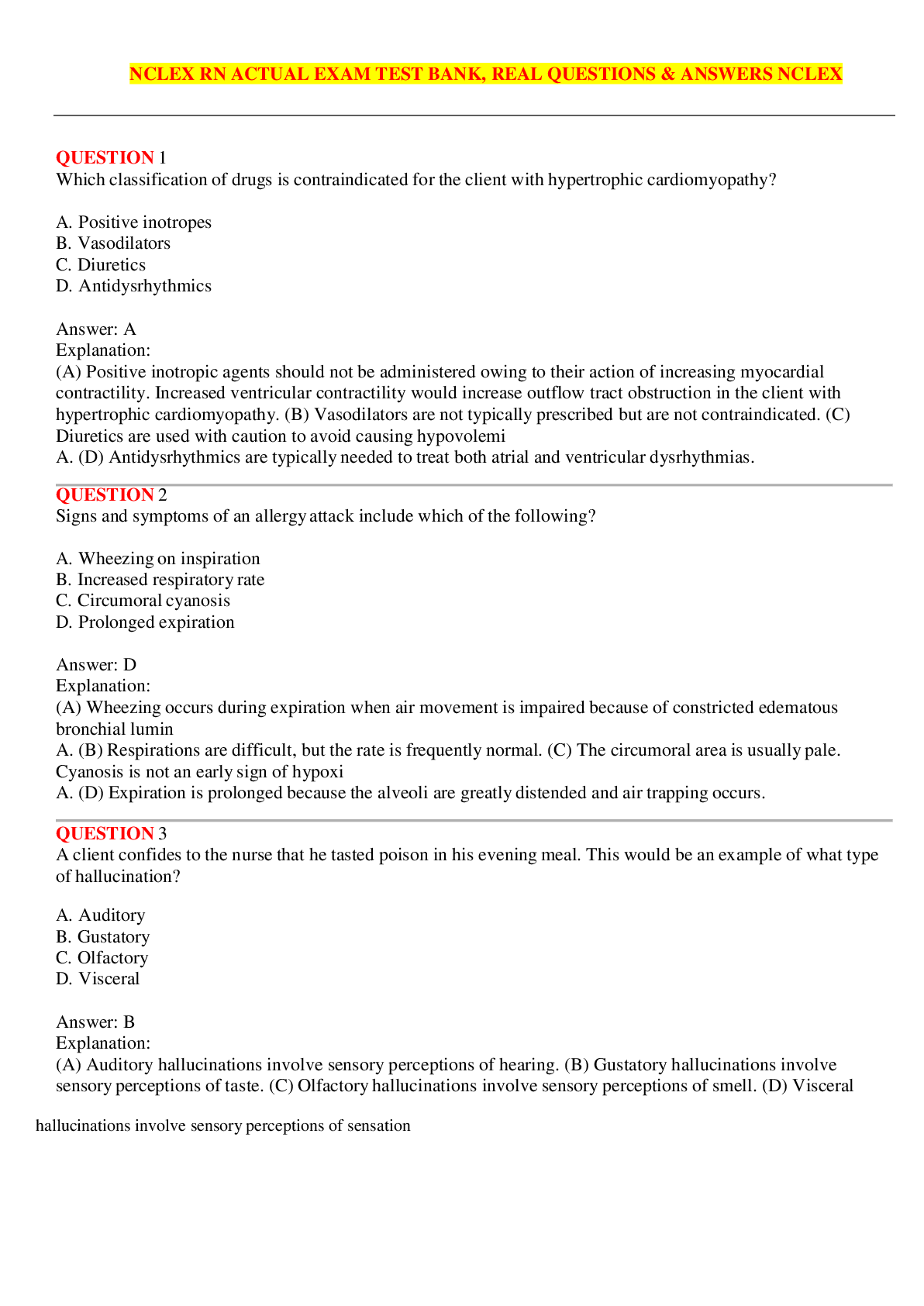
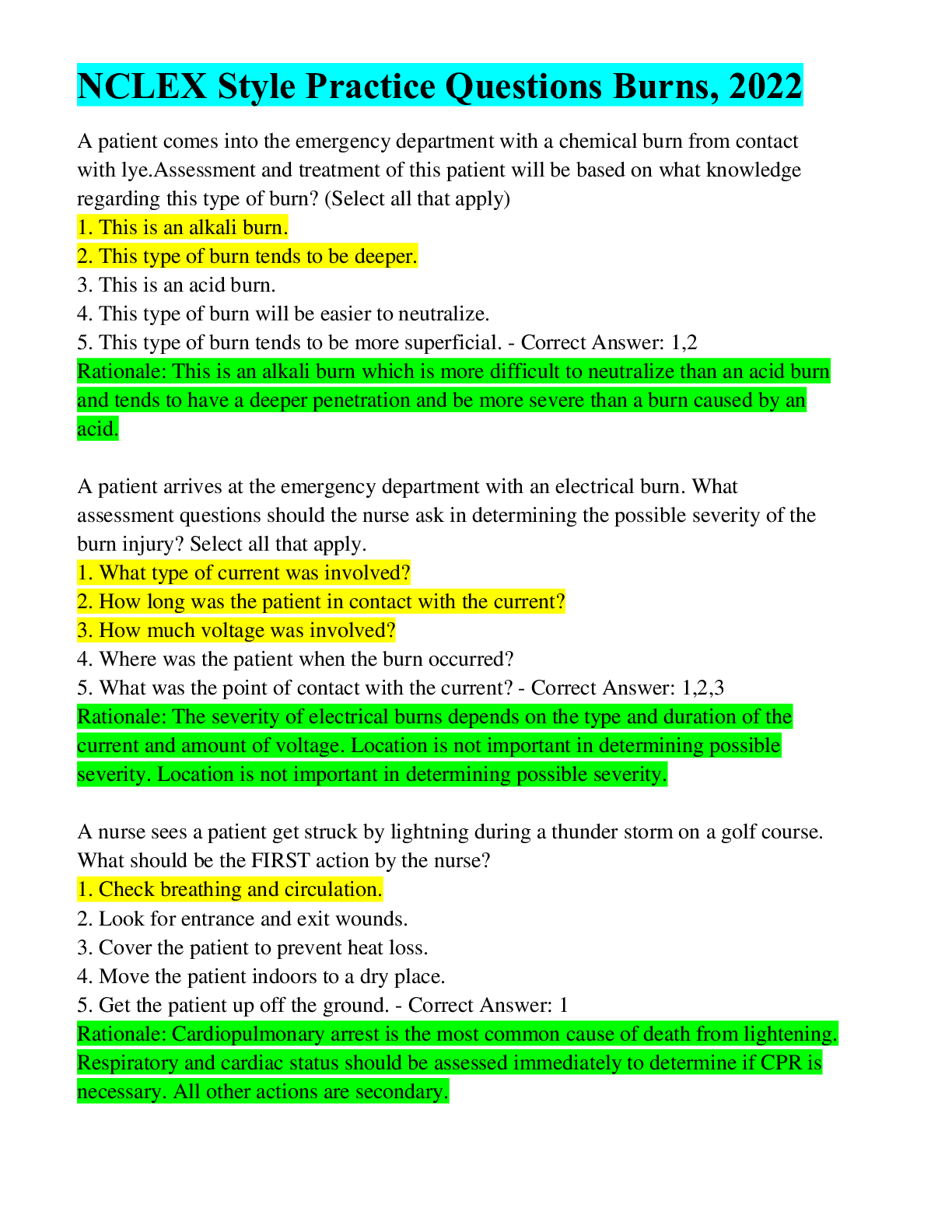

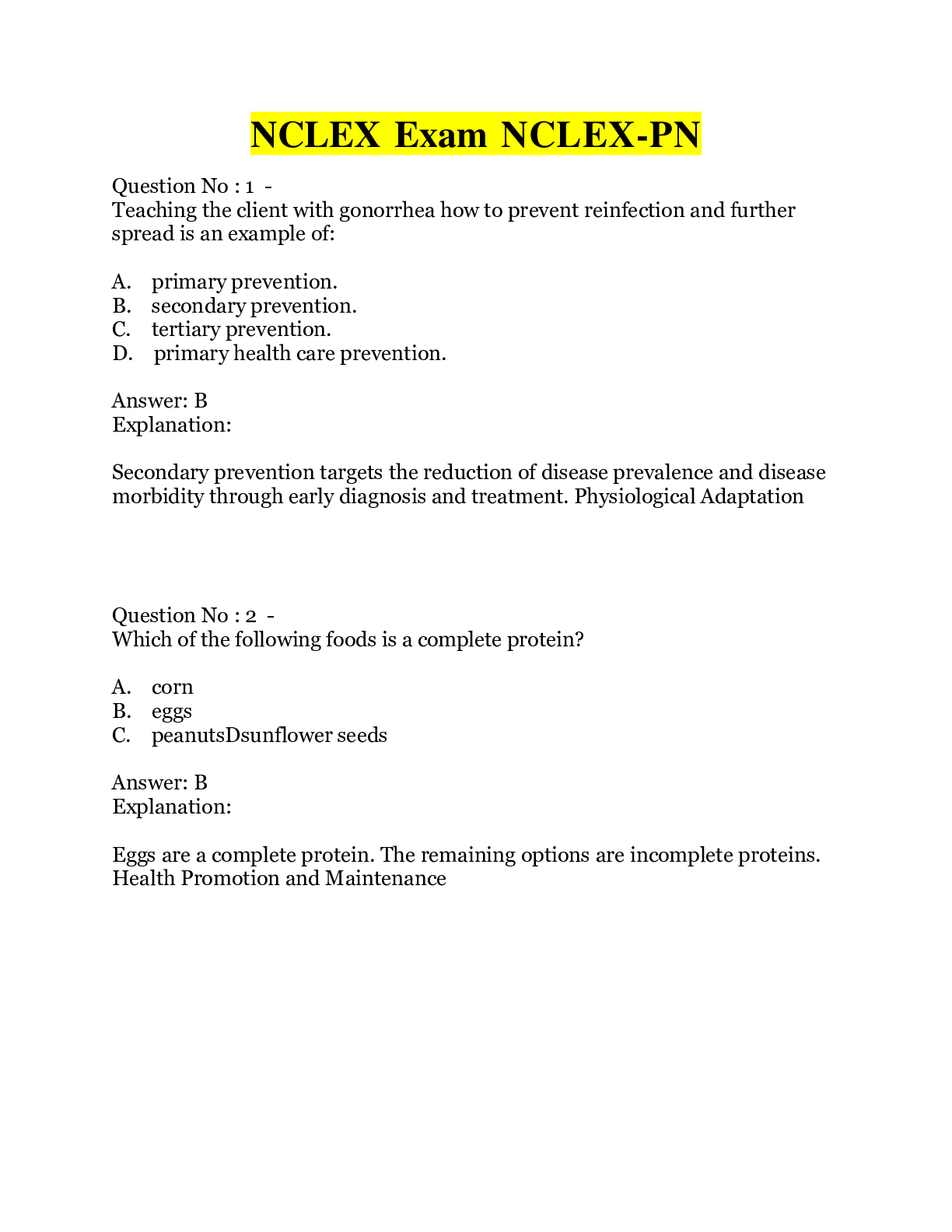


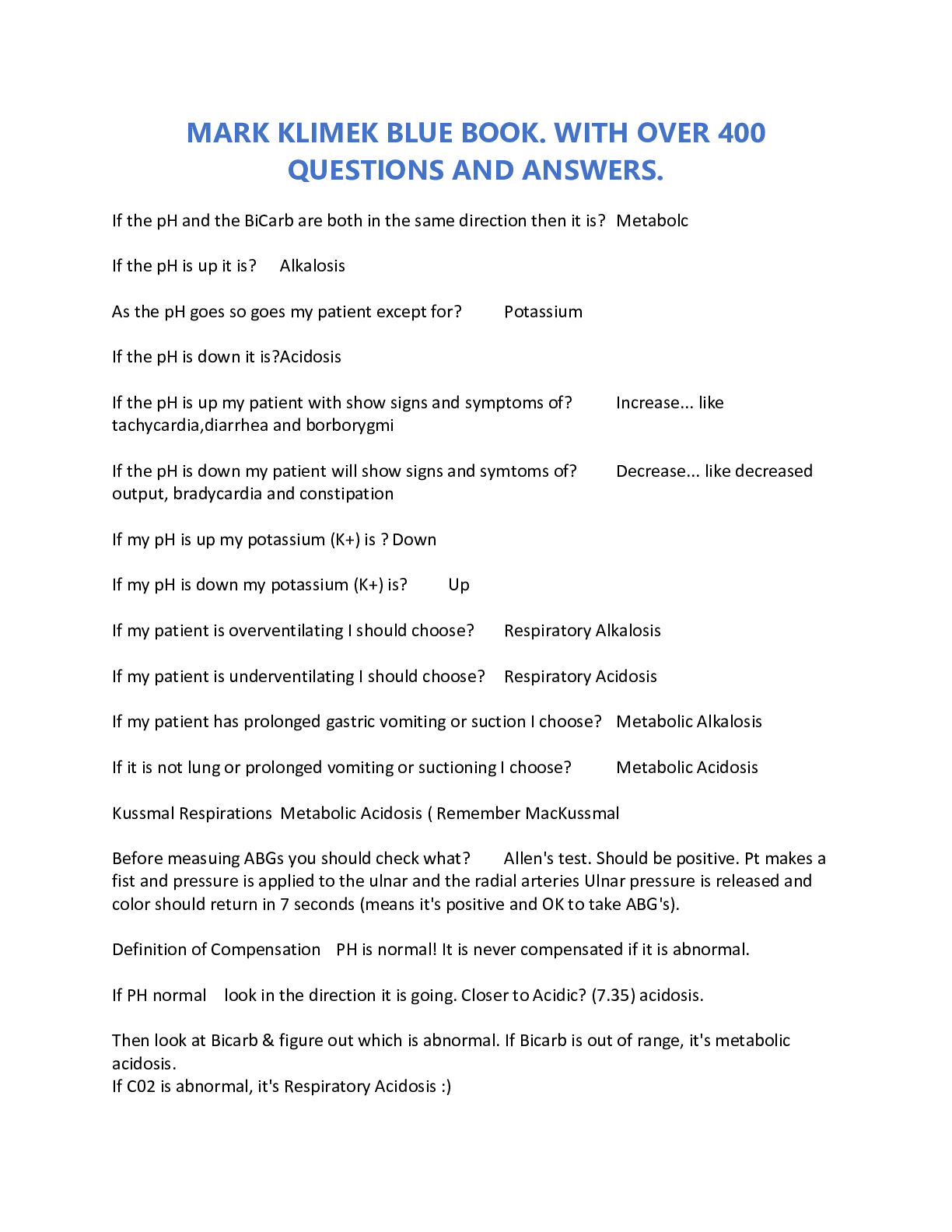
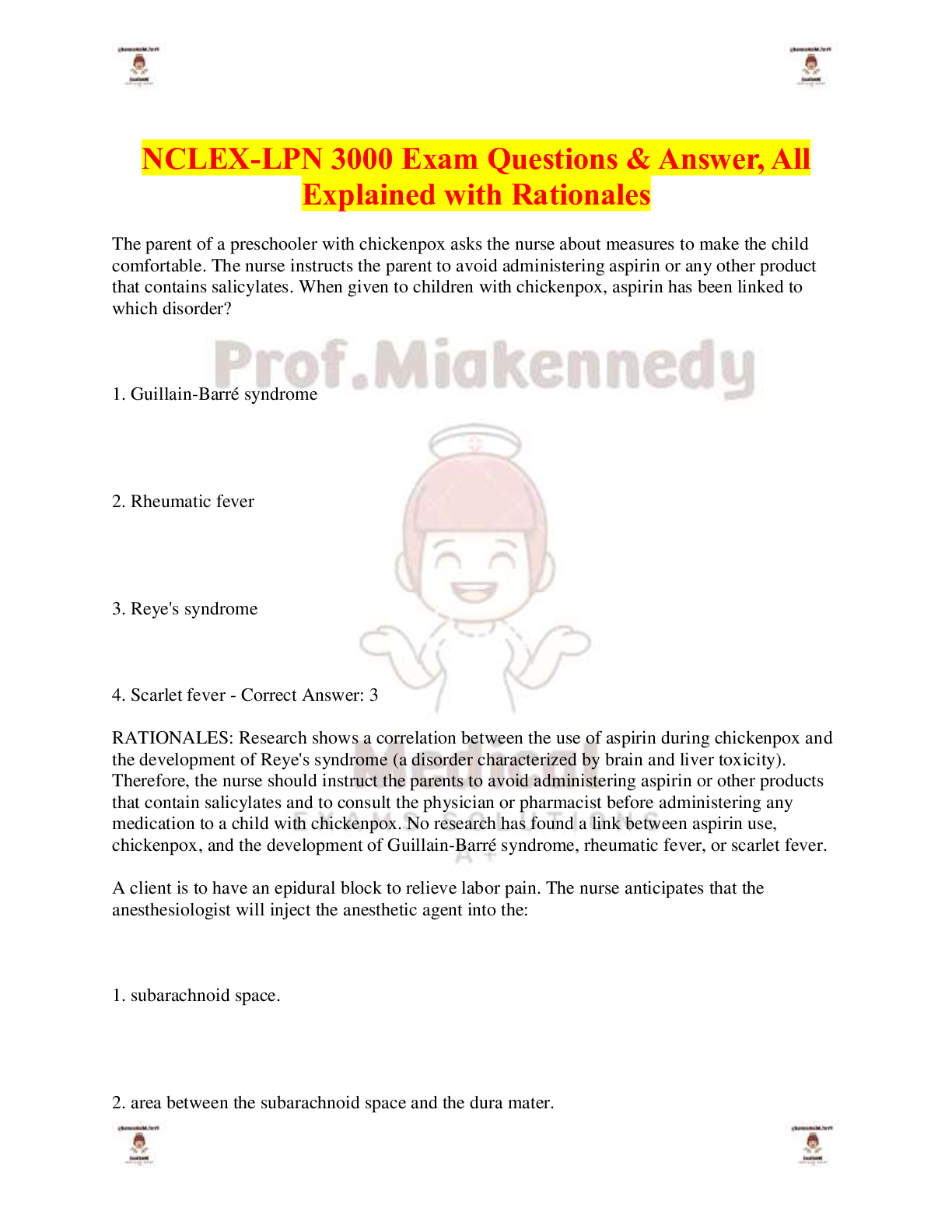
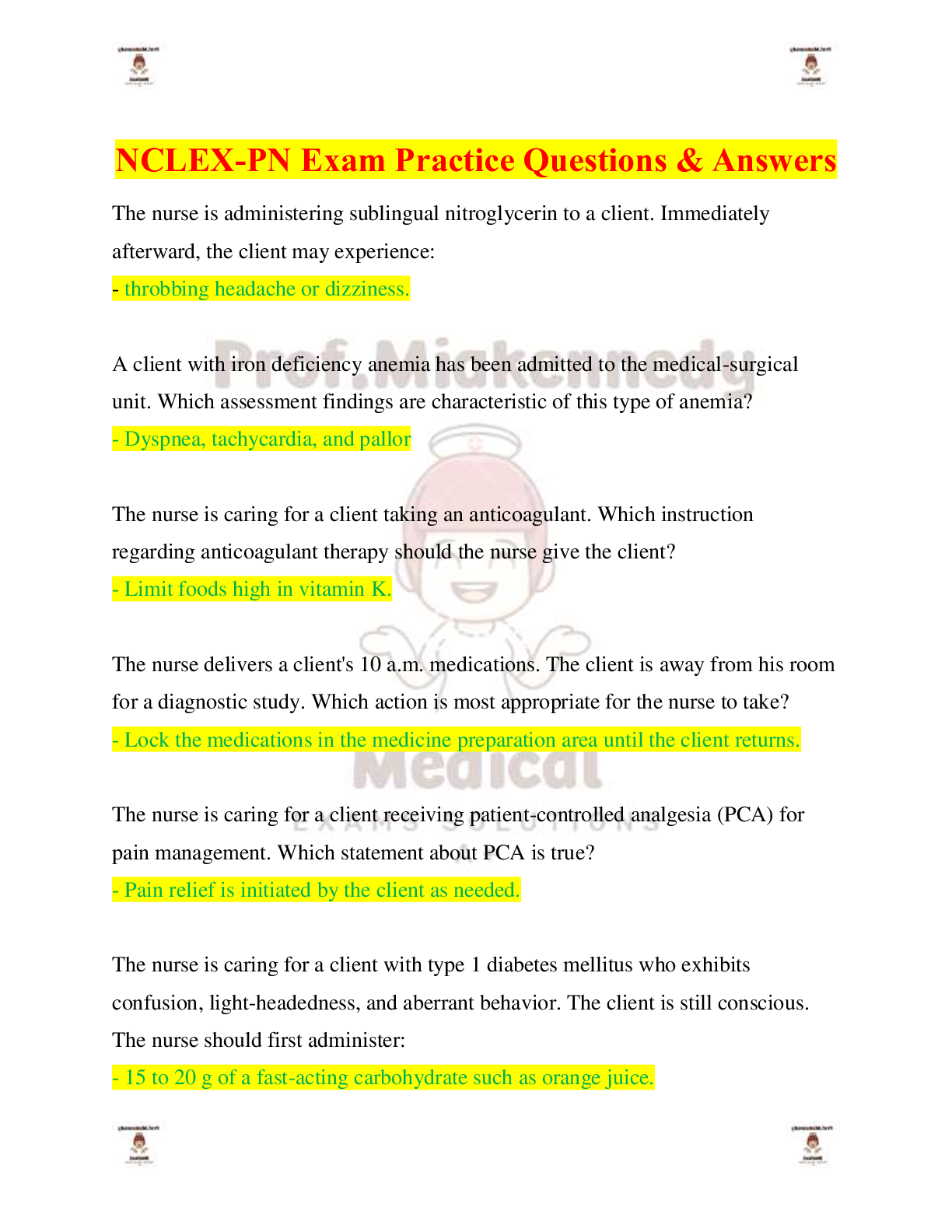
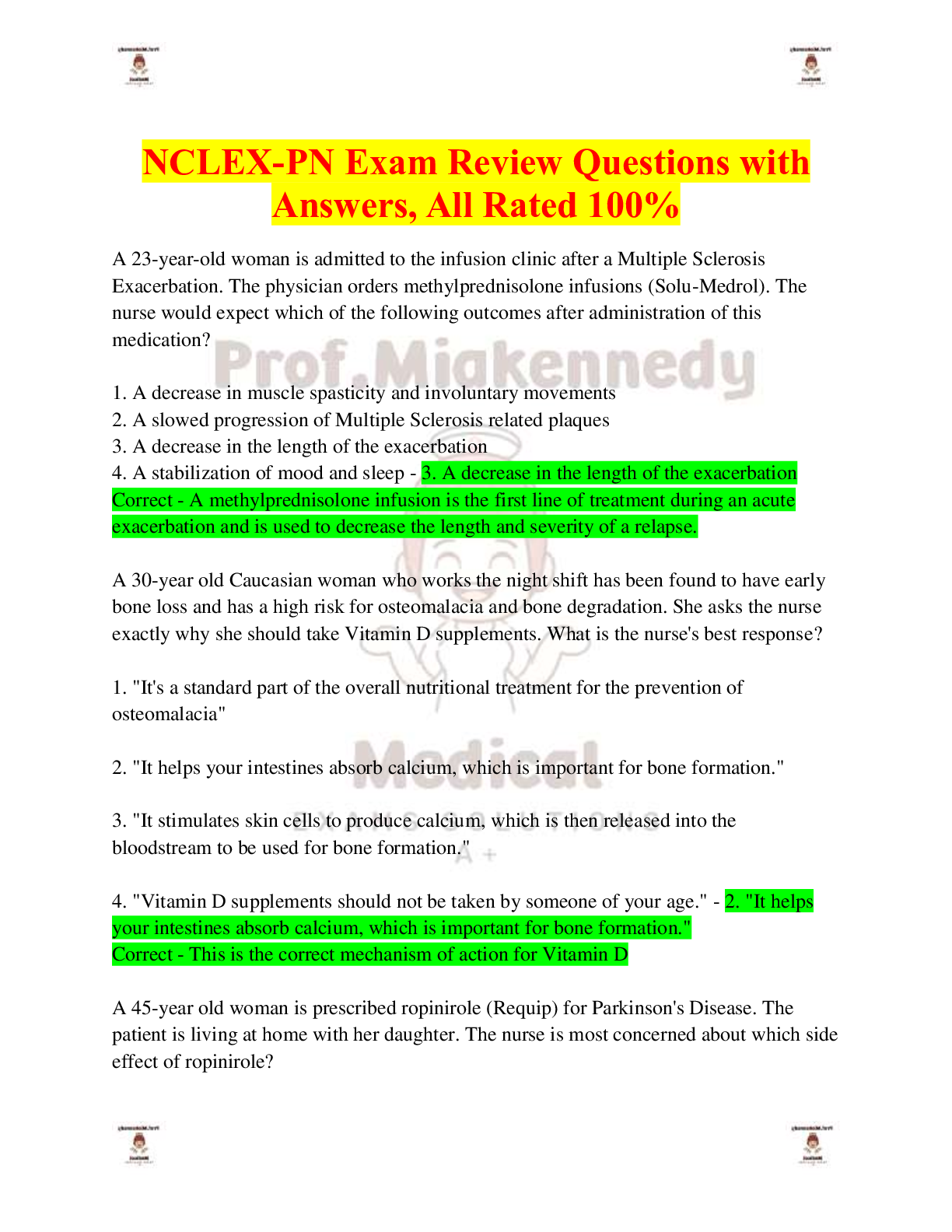
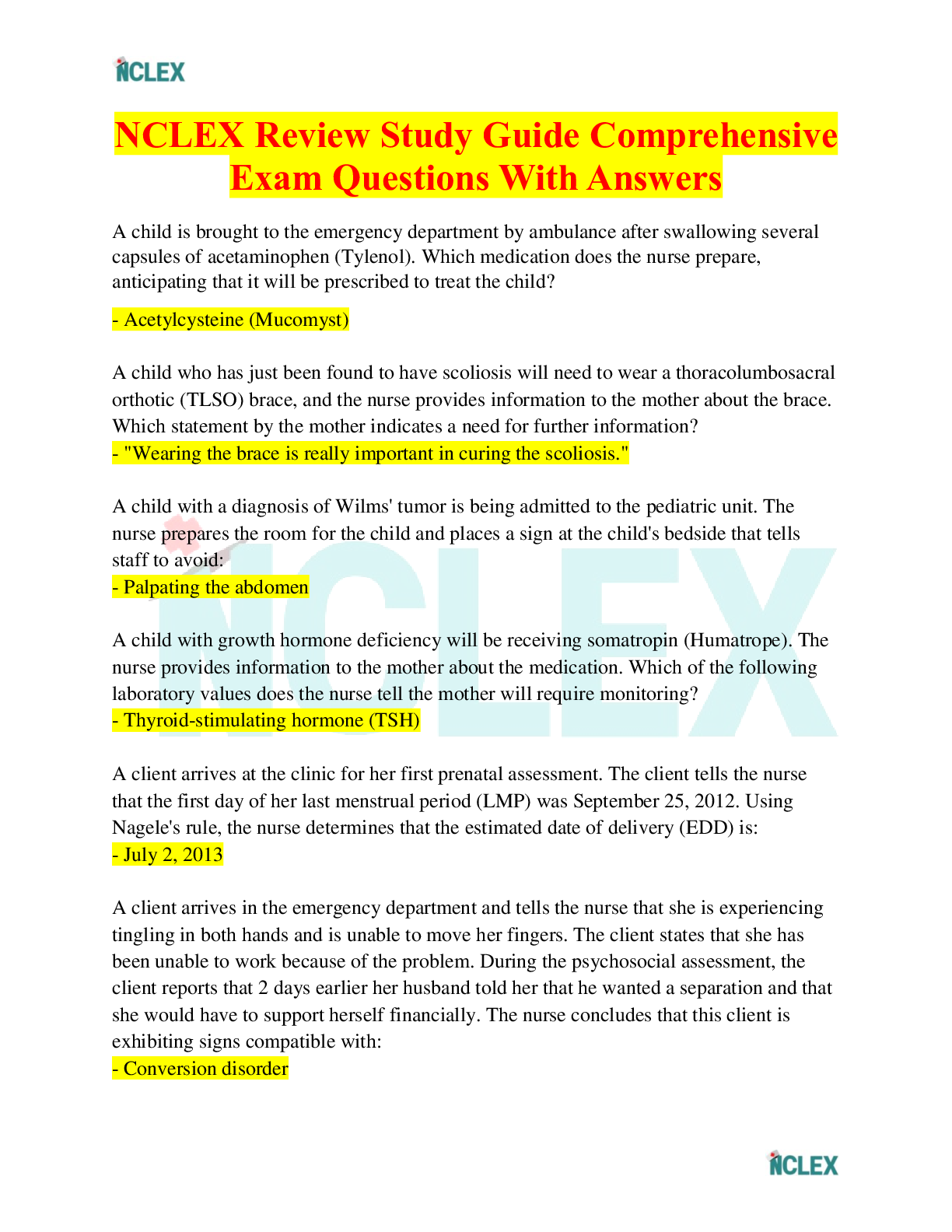
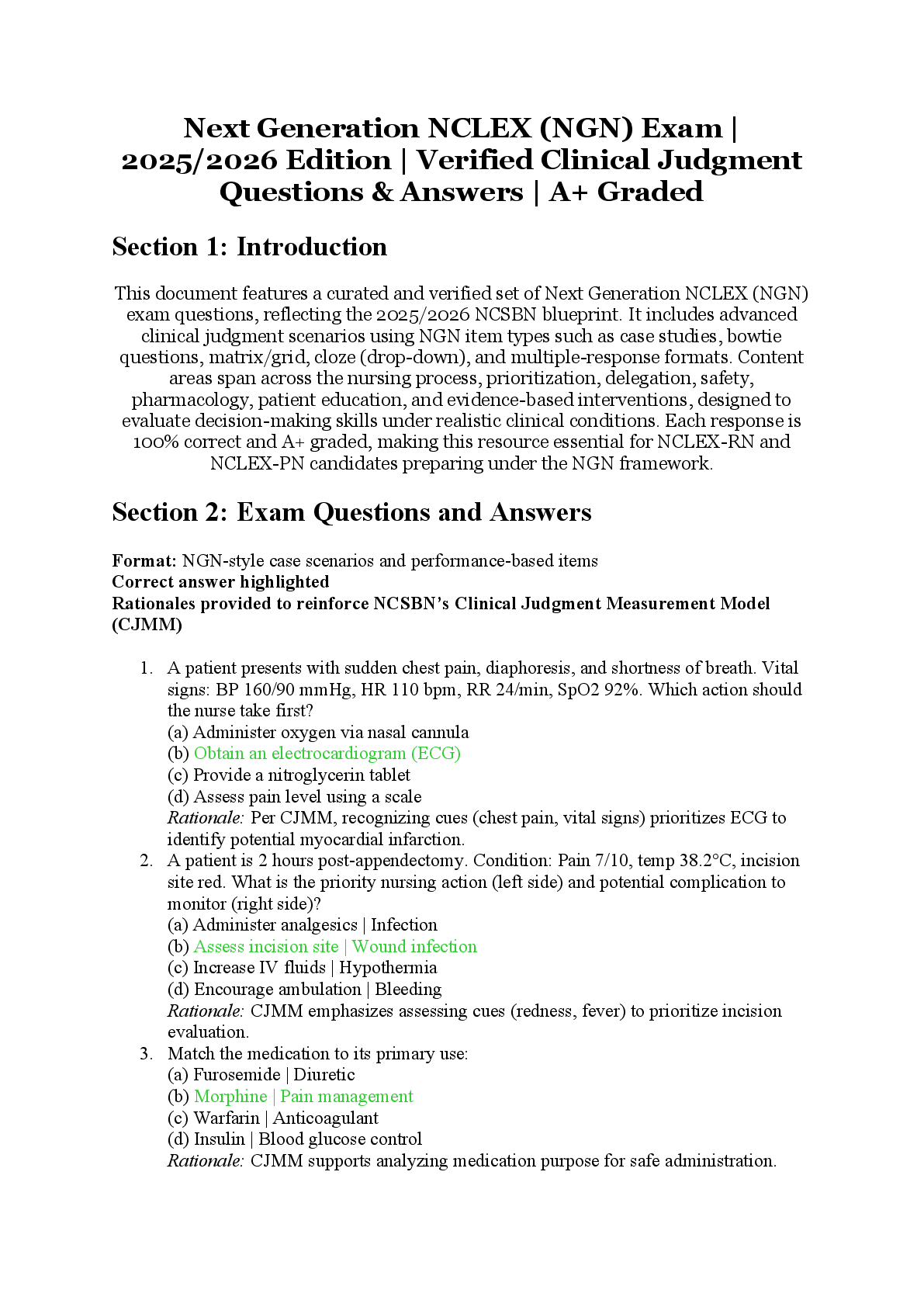
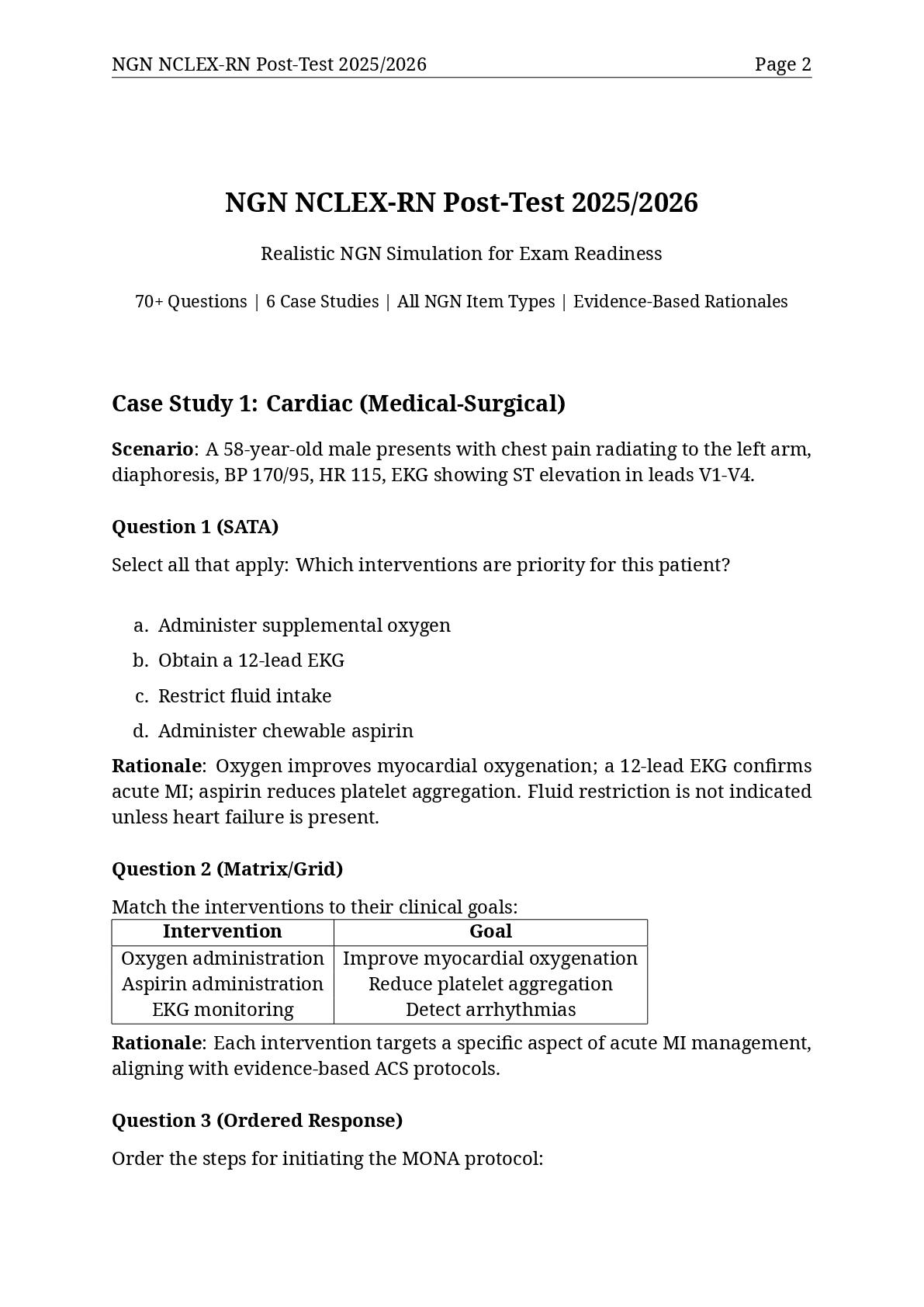
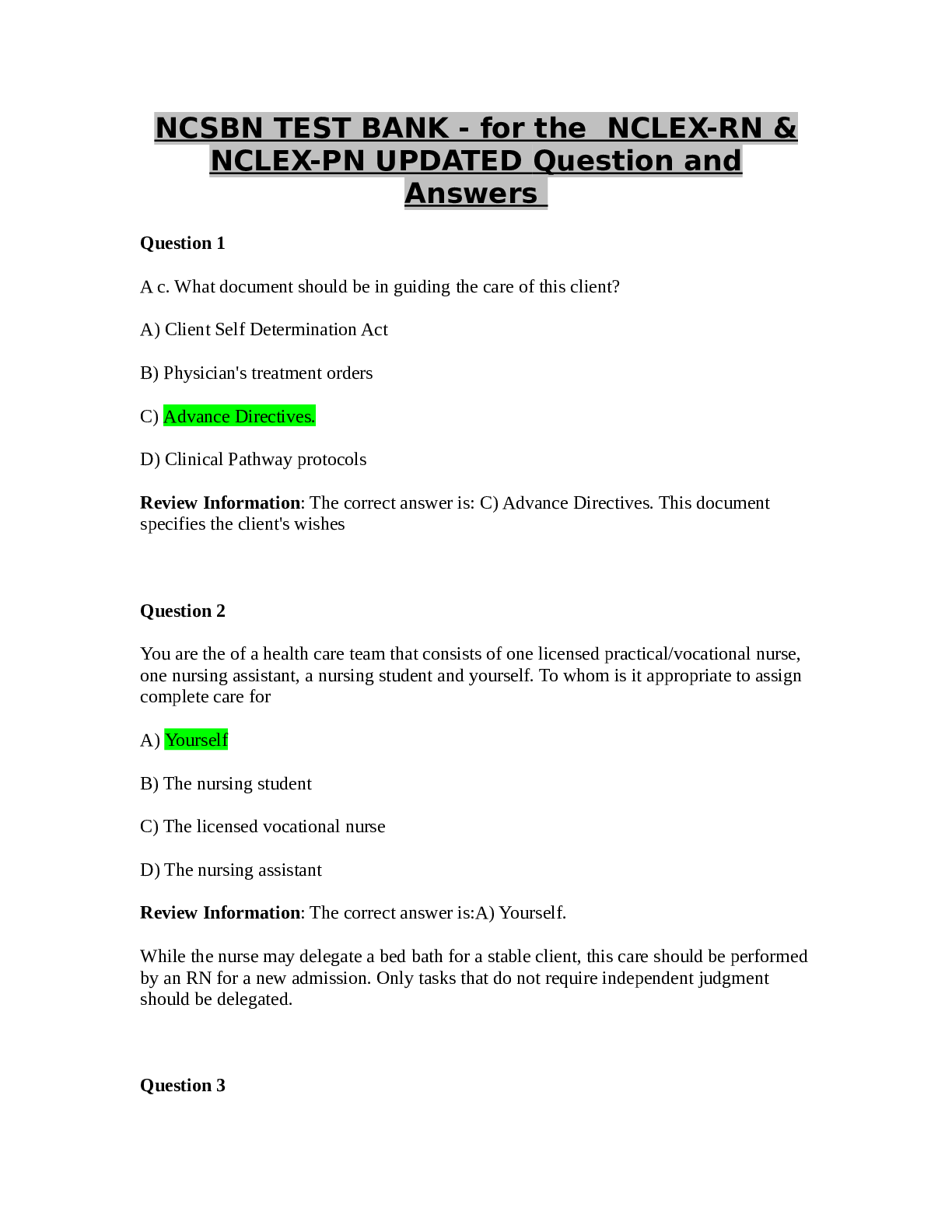
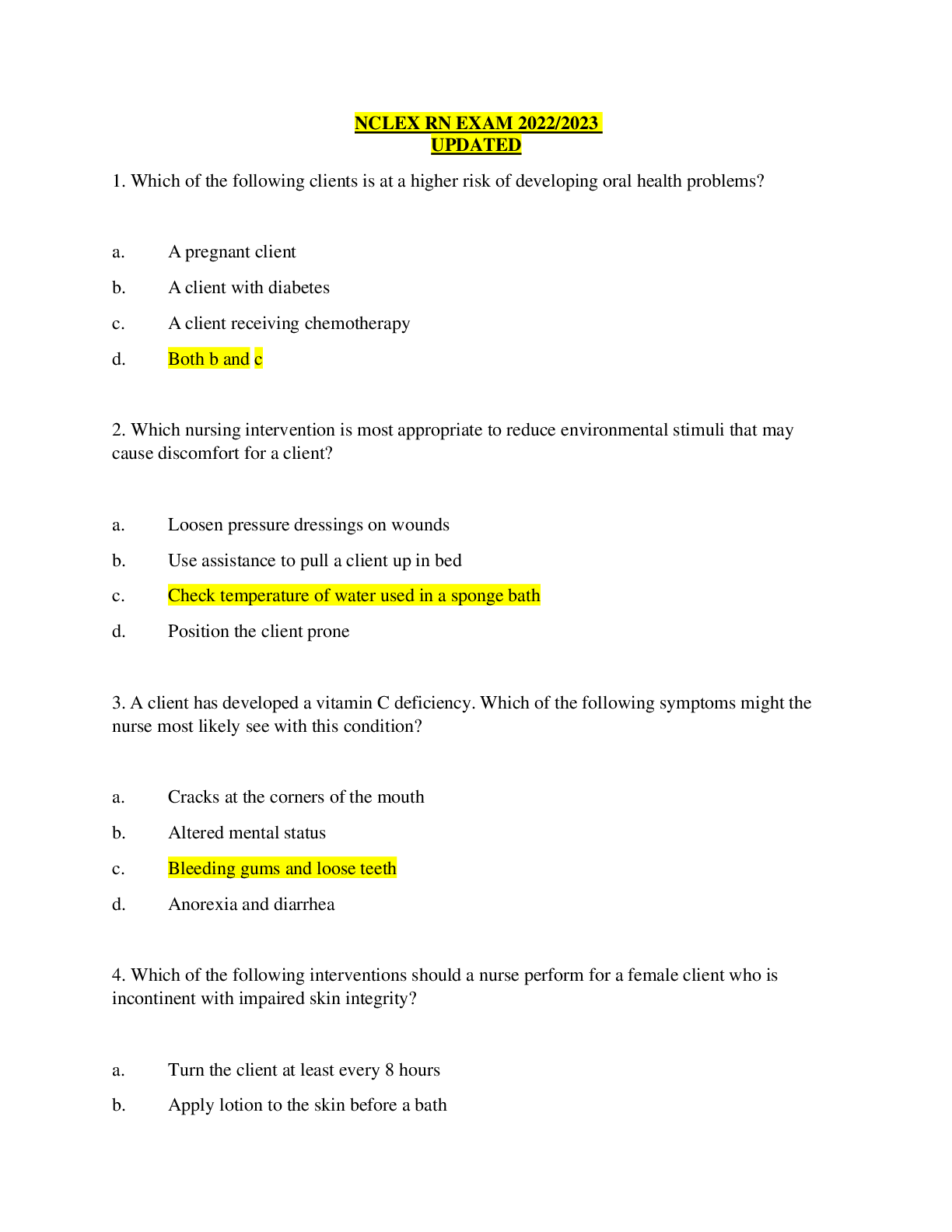
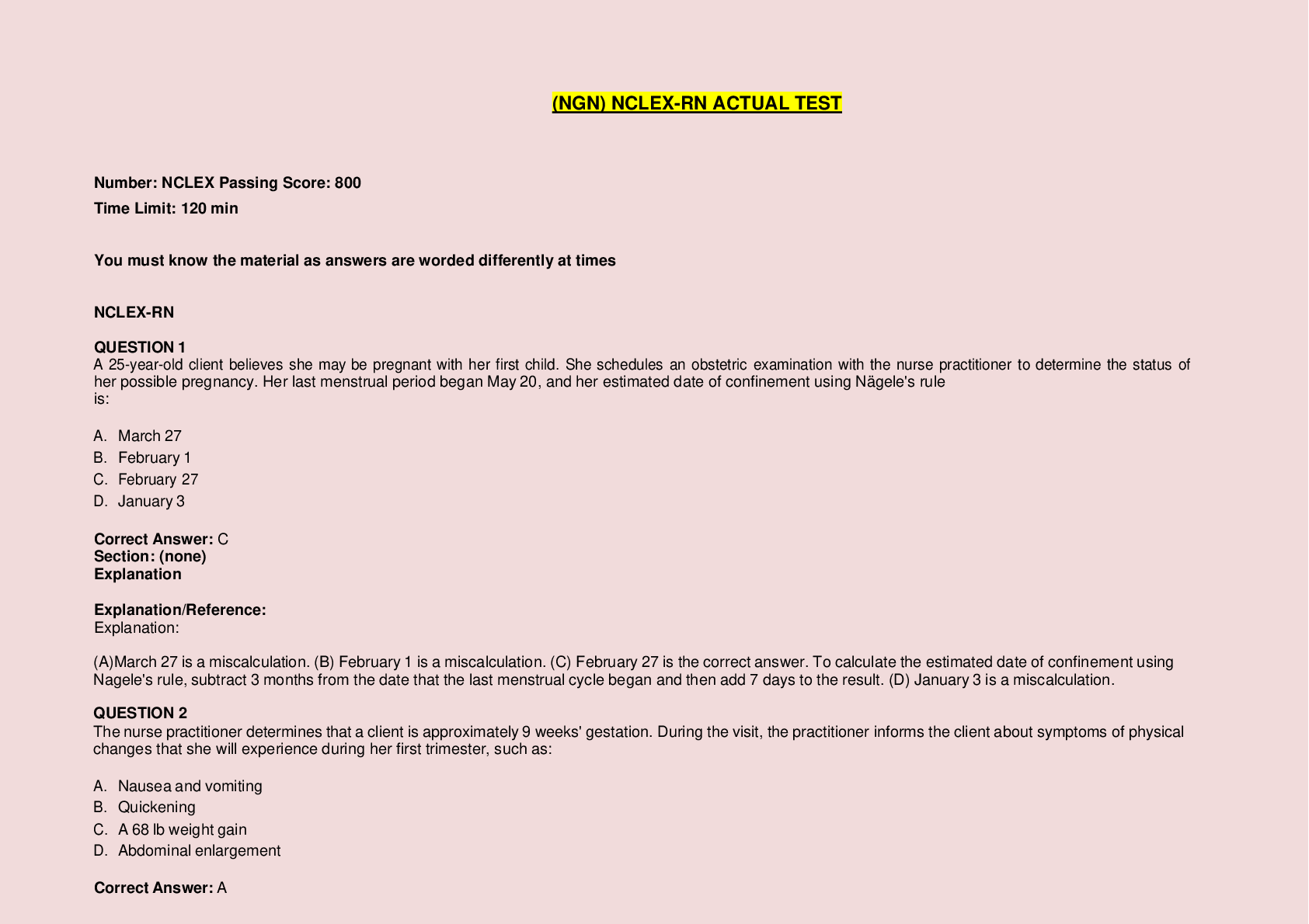
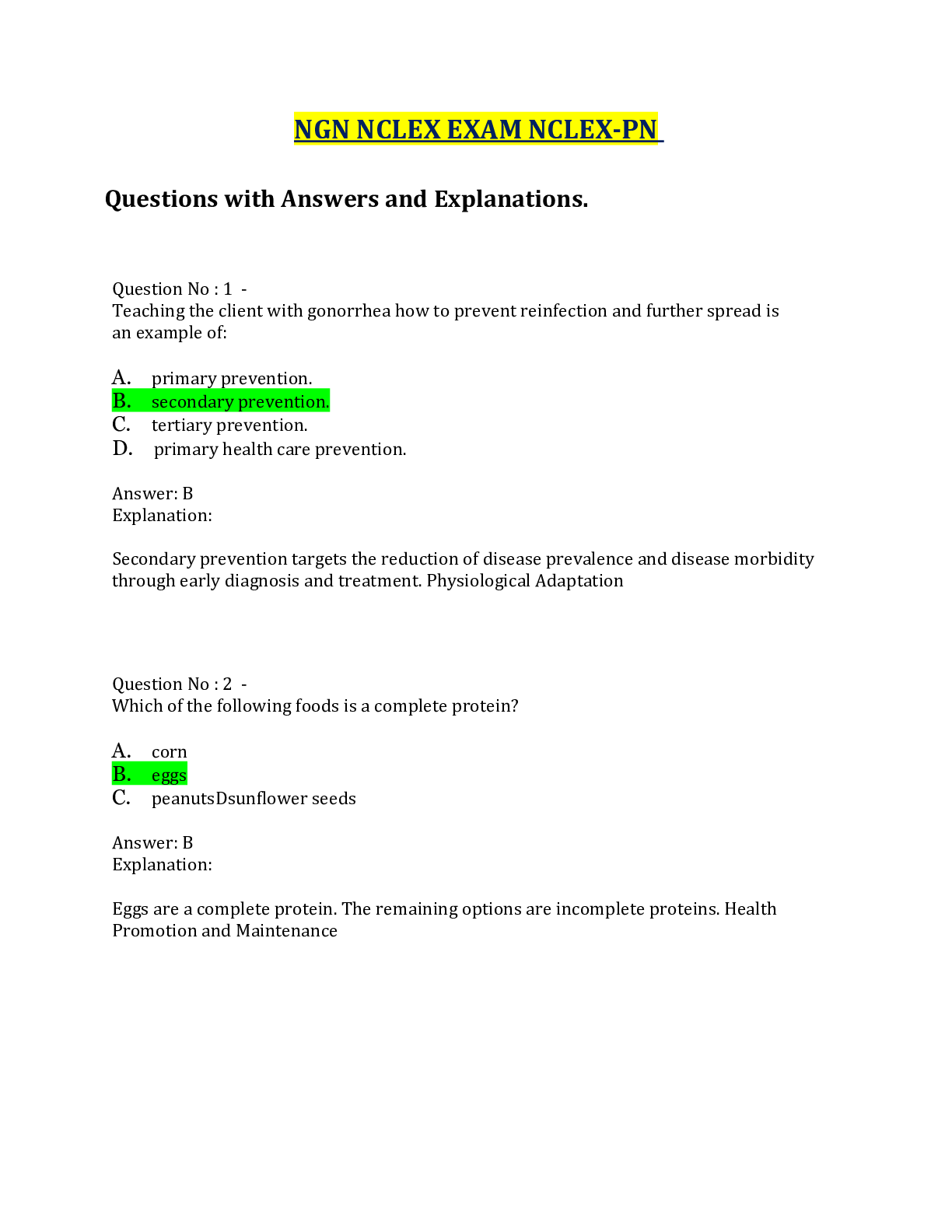

 JN21.png)
